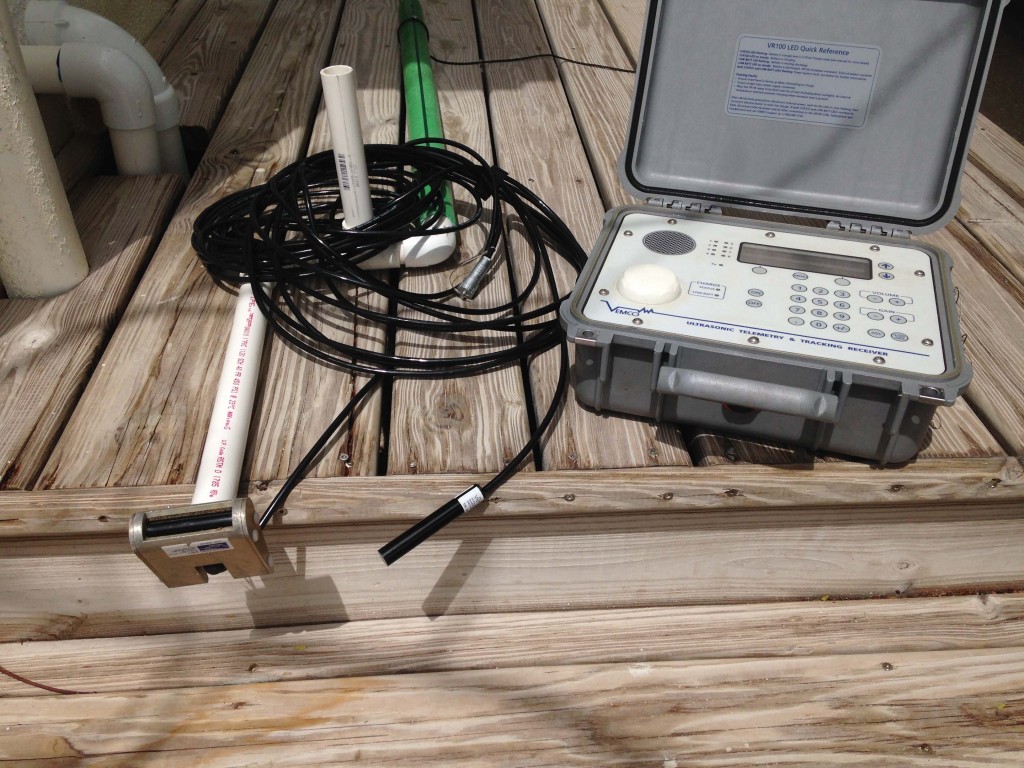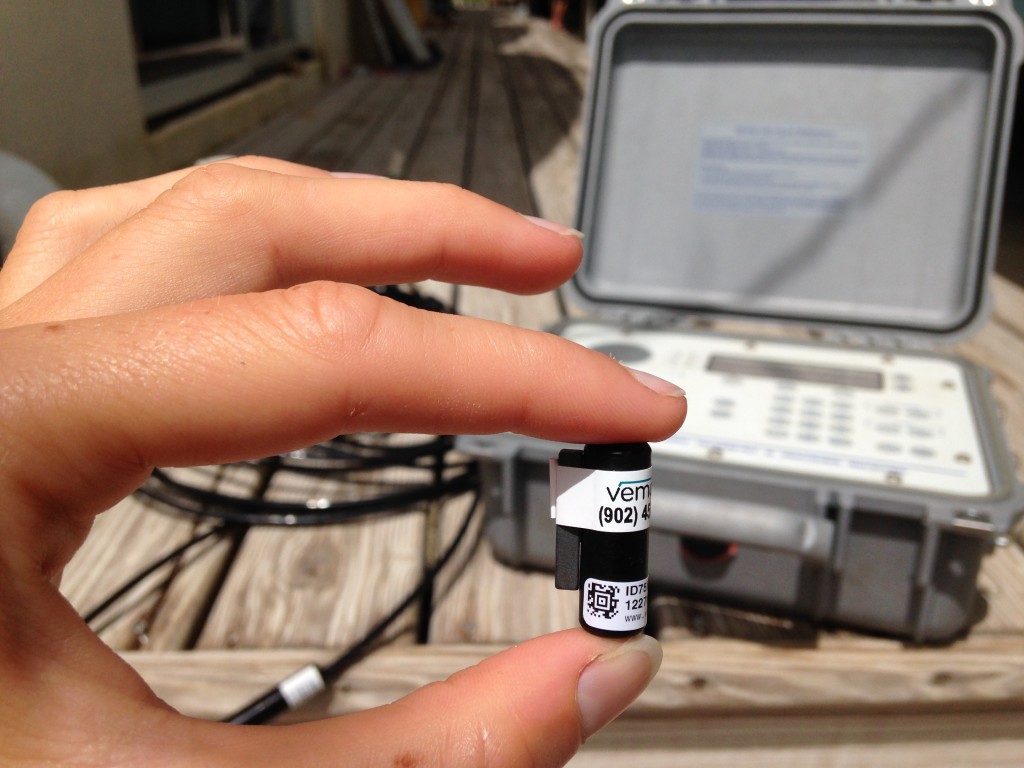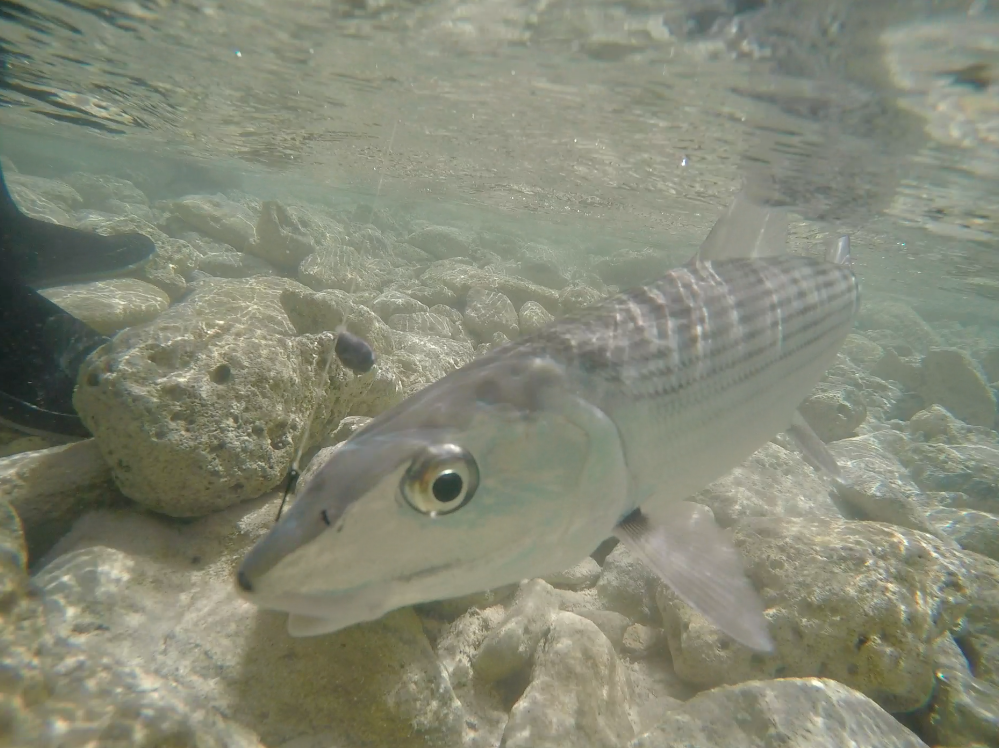The research team led by Dr. Aaron Shultz and Georgiana Burruss (CEI) spent four nights out manually tracking bonefish spawning aggregations near Cape Eleuthera. Bonefish school at a nearby location and move along the coast at night to spawn in deep water. By tracking the fish offshore at night, the team will gain an understanding of where and when the aggregation is spawning as well as how weather, lunar phase, and tidal cycle might impact spawning patterns.

The team deployed two gastric transmitters that signal the receiver every second, allowing the bonefish to be tracked manually using a VEMCO VR100 receiver. To deploy the gastric transmitters, bonefish are captured from the aggregation using a handline. The transmitter is then pushed down the esophagus of the fish using a small tube. Each fish is given an hour to recover and then returned to the aggregation. At sunset, the fish in the aggregation move to the surface of the water, exhibiting a behavior called porpoising, in which the bonefish rush to the surface and gulp air. This behavior typically occurs several hours before bonefish move down to depths of over 150ft. After sunset, the team follows the aggregation overnight, taking GPS waypoints every 15 minutes. This data is used to generate a path that the aggregation takes from sunset to sunrise. Over 4 nights, the aggregation moved from shallow coral reef areas(<2m) to deep open ocean environments (>30m) and then returned to their prespawning site by sunrise. Several studies have suggested that bonefish aggregations move to deep water to spawn; we have tracked two trips to the Exuma Sound so far. Interestingly, one of the tagged barracuda closely followed the bonefish aggregation for over 6 hours!


The team hopes to track bonefish aggregations to their spawning sites over the coming months. For more information about our research and how to support, please contact georgianaburruss@islandschool.org and aaron.dean.shultz@gmail.com. Stayed tuned for more updates!